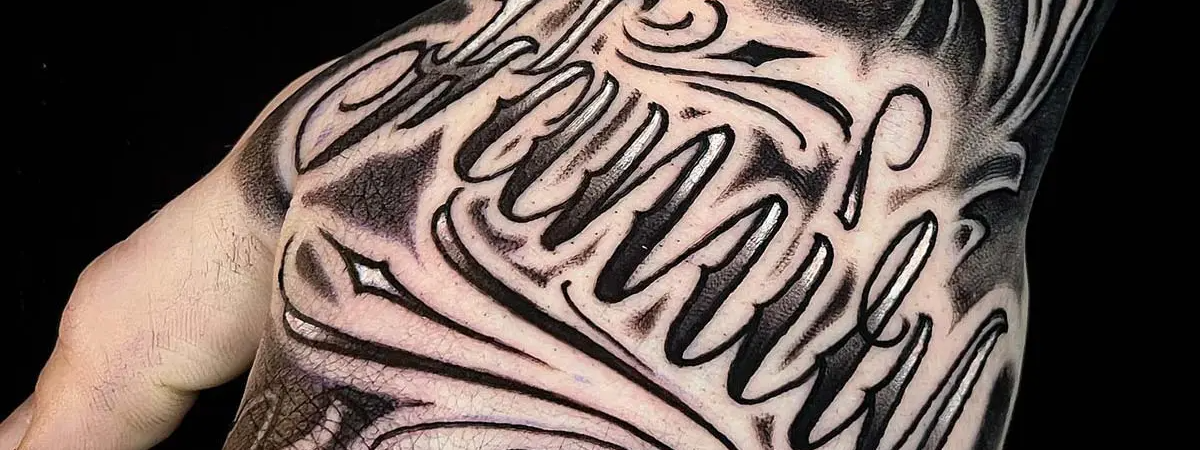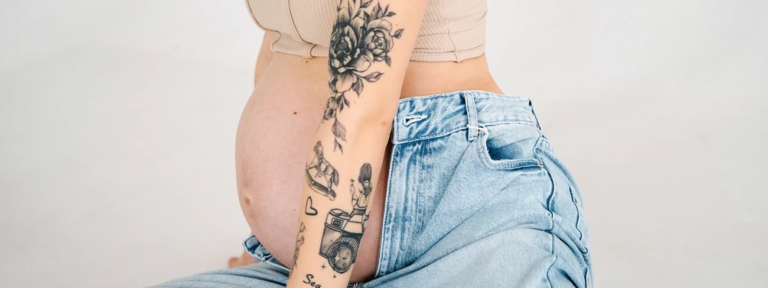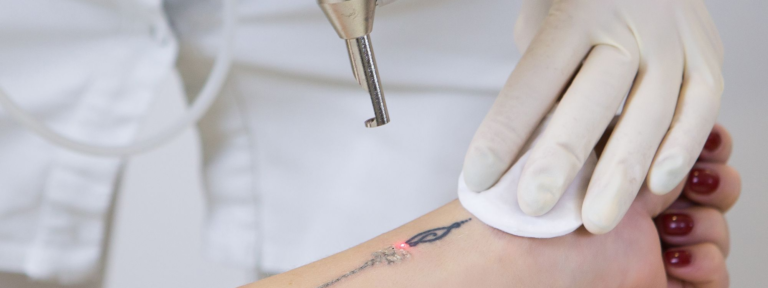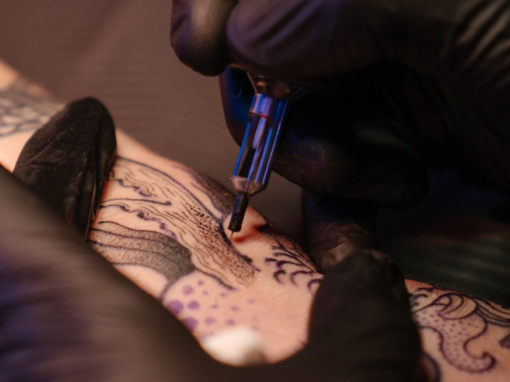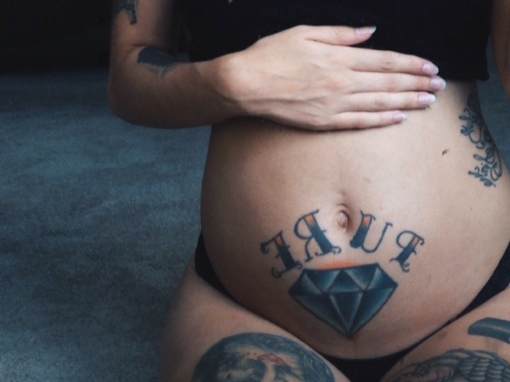One of the steps of preparing for a tattoo is realizing how long it can heal. Of course, this indicator is very personal, however, there are general trends. Does it hurt the first week? What are the first signs of a tattoo infection? These questions are the most popular among those who make the first tattoo. In this article, we will answer them and give you recommendations on how to reduce the healing time.
Tattoo Healing Process
Usually, the healing process lasts 2-3 weeks. But it depends both on the size of your tattoo and your predisposition. The important fact is also that without proper aftercare the tattoo may heal up for 6 months. Here in short how you can feel while your tattoo is healing.
⌛ The First Day
The tattoo artist will cover your new tattoo with a bandage or plastic wrap. Usually, in 2 hours, you can remove them. On this day you can see liquid oozing from the tattoo. It can be mixed with excess ink. This process is normal and there is no reason for the panic. The skin can be slightly red and warm. Often, it can feel sore.
🩹 The First Week
During the first week, the tattoo should be less red and feel less sore. Your tattoo may look duller but it is a sign of the healing process. Also, you can notice some scabbing. Tattoo artists recommend not picking the scabs because it can worsen the situation. At this time the skin can start itching. Do not scratch it, as it can lead to scars. It is important to moisturize the tattoo 1–2 times per day.
⌚ The Second Week
This is the peak of itching. It can irritate you but you still should not scratch it, instead of this continue using moisturizers or lotions. In most cases, during this week there is a noticeable reduction in redness.
📅 The Third Week
During this time all the scabs should pass. The tattoo will begin to dry out. If it does not happen and it is still red, then it can be early signs of the infection.
💯 After the First Month
All skin layers should regenerate and the tattoo will be fully healed. No itching and redness should be by this time. However, it is recommended to continue aftercare to save your tattoo from the external environment influence. So, the skin around your tattoo will be moisturized and the tattoo will be bright.
Symptoms of the Tattoo Infection
Some signs can point out that there is any kind of problems with a tattoo. If you face some of them, do not hesitate to visit your doctor as they can identify symptoms of both the infection and allergic reaction to the ink.
- You have a fever.
- Redness does not reduce during the first 3-4 weeks.
- The tattoo oozes after 3 days.
- The skin around the tattoo is swollen.
- You have strong itching after the first month.
- The tattoo is healing by leaving scars.

Tattoo Aftercare Instructions
Aftercare instructions are among the most important steps to heal the tattoo. Follow them to be sure that you minimize infection possibility. The tattoo artist will apply antibiotic ointment on the tattoo and cover this area in a bandage or plastic wrap. It will protect your organism from bacteria and your tattoo from getting irritated. After this will begin your main role. The usual aftercare instructions are:
1. Regularly (2-3 times per day) wash your tattoo with warm water and soap. Then apply alcohol-free moisturizer.
2. When you go outside, wear a sun-protective cloth or use sunscreen. This protects your tattoo from becoming dull and your skin from sunburn.
3. Do not re-bandage the tattoo. It can result in extra moisture that slows down the healing process.
4. Some artists recommend products with vitamins A and D to help the skin to heal.
5. Do not swim in the pool and do not get the tattoo wet in the bath for the first 2 weeks. The water there is not sterile and can cause infections. Besides, additional moisture can slow down the healing process.
6. Avoid using tanning beds as they can fade the tattoo and even increase the risk of developing skin cancer.
7. Do not engage in physical activity while your tattoo is healing. The tattoo is an open wound and your sweat can increase the possibility of getting an infection or slowing down the healing.
Dry Healing
Some people are adherents of dry healing. They do not use moisturizers but follow all other instructions. These people believe that moisturizers because of artificial ingredients can increase the possibility of skin irritation or allergic reaction. But on the other hand, avoiding moisturizers increases itching.
So, it is up to you and your tattoo artist whether to follow this method or not. However, we do not recommend dry healing. Even if you are an allergic person, there are tattoo aftercare products that will suit you. Dry healing increases scratch to the point that they are hard to ignore. Also, it affects tattoo looks because it makes scabs deeper.
How To Speed Up Tattoo Healing Process
It is obvious that tattoo aftercare is the first step in helping the tattoo to heal. But there are additional steps that can reduce the healing process and make your life easier.
1. Make sure that your artist is a professional one and will not cause additional skin trauma because of the poor technique.
2. Wash your hands before removing the plastic wrap and anytime before touching the tattoo. So, the tattoo will be clean and it will be easy for the skin to heal without any infection.
3. Every time to clean the tattoo, use a gentle soap with warm or even hot water to wash the goo off the skin. This soap will not cause allergic reactions and is perfect for all skin types.
4. It is better to use paper towels instead of cloth towels to dry out the tattoo because they are more sanitary clean.
5. Drink a lot of water to keep your skin hydrated. It will accelerate the regeneration.
6. Do not scratch the scabs and flakes of skin during the healing process, it will only lead to their enlargement. It is better to use moisturizer.
7. Avoid wearing tight clothes also in order not to scratch the scabs.

How To Reduce the Tattoo Itching: Tips & Tricks
As you have understood, itching is a part of tattoo healing. Unfortunately, this process can be the most unpleasant. But there are some tips & tricks that will minimize it.
1. Apply a cold compress to relieve itching tattoos. Make sure that the cloth you use is clean.
T2. ap or pat the itchy spot but the relief will be temporary and you will need to repeat it.
3. Get your mind busy. It is a psychological effect that will shift the attention of the brain from the problem to any other business (e.g. your hobby).
4. Ask your doctor whether you can take antihistamines or hydrocortisone — medications to relieve itchy tattoos.
Does Coconut Oil Help a Tattoo To Heal?

There is no scientific proof that coconut oil helps a tattoo to heal. Samoans (the indigenous Polynesian people of the Samoan Islands), have used it more for the tattoo to shine. We recommend you ask your doctor whether you can apply coconut oil to your tattoo. People usually use virgin, extra virgin, or unrefined coconut oil as these kinds are of the highest quality.
Below you can see some benefits that coconut oil is supposed to have.
- It is a natural moisturizer that is also rich in vitamin E. We need this kind of vitamin to fight against viruses and bacteria.
- Thanks to vitamin E, coconut oil fights tattoo infections.
- Pure coconut oil is much more affordable than tattoo aftercare products. And you will use less of it.
- It is hypoallergenic. It will not cause allergic reactions and is suitable for all skin types.
- It is widely available and you can buy it in any supermarket or health specialty store.
Summary
So, how long do tattoos take to heal? The tattoo healing process is usually divided into 5 steps. On the first day, the skin can be slightly red and warm. Often, it can feel sore. During the first week, the tattoo should be less red and feel less sore but you can notice some scabbing. The second week is the peak of itching. From the third week, the tattoo will begin to dry out. After the first month, all skin layers should regenerate.
How long the tattoo will heal depends on its size and location. The smaller the tattoo, the less time it will need. Tattoos located on the stationery area like wrist or back also will need less time. There are some tips on how to speed up the healing process. You should remember that your health is the most important. So, do not be afraid to ask your tattoo artist or doctor for recommendations and advice.
FAQs
🤔 How Can I Make My Tattoo Heal Faster?
There is a lot of advice concerning speeding up tattoo healing. You should drink a lot of water, use paper towels instead of cloth towels. Always wash your hands before touching a new tattoo. Other advice you can read in our article.
📅 Can a Tattoo Heal in a Week?
No. A tattoo is a kind of wound on your skin. Even small tattoos usually need up to 3 weeks to heal. The average time for a tattoo to heal is 3-6 weeks.
❌ What To Avoid After Getting a Tattoo?
After getting a tattoo, do not re-bandage the tattoo. Do not swim in the pool and do not get the tattoo wet in the bath for the first 2 weeks. Do not engage in physical activity while your tattoo is healing.
⌛ How Often Should I Moisturize My New Tattoo?
Usually, tattoo artists recommend moisturizing new tattoos 2-3 times per day. It is better to ask your tattooer.
🤨 What Happens if I Don’t Moisturize My Tattoo?
It is called dry healing. Avoiding moisturizer increases itching. You can read how to reduce tattoo itching in our article.
